![]()
For at least twenty years, youth gangs had become a prominent and menacing way of life within parts of Manchester that had festered within the slums of places such as Hope Street, Greengate, Ordsall, Gorton, Angel Meadow and Ancoats to name but a few.
Young lads between the ages of 14 and 18 found solace by joining gangs that gave them a feeling of importance and by fighting with rival gangs, it also gave them the respect they felt they deserved as well as a sense of belonging. And for many, it was a way out of the monotony of day-to-day life that had offered them very little hope.
With smart haircuts and their own unique dress code, which included bell-bottomed trousers, silk scarves and brass-tipped pointed clogs, they would roam the back streets and alleyways of Manchester in gangs that reflected the territories they were formed in. For example, The Bengal Tigers came from the streets around Bengal Street in Ancoats, Meadow Lads from Angel Meadow and the Grey Mare Boys from Grey Mare Lane in Bradford.
And to coincide with this ever increasing wave of gang violence, a name would emerge out from the streets that would become synonymous with each gang – the “Scuttlers.”
Fights would be organised, it seems, before hand with gangs leaving messages with dates, times and venues written in chalk days in advance. They would meet in fields, crofts and vacant grounds in the densely-populated areas of Manchester, as well as on the streets they had taken their names from.
As for the police, they had become powerless, it seems, to stem the tide of violence that was gripping the city. And when they did try to intervene, both rival gangs would, at times, break from fighting each other and join forces simply to attack the police who had come between them.
Armed with various weapons such as broken bottles, stones and knives, it was without doubt that of a sharpened brass belt buckle that was the favoured weapon of most, and as ferocious turf wars were played out between rival gangs, their aim wasn’t to murder one another but simply to maim and disfigure. Of course it goes without saying that there were some casualties during this reign of violence, but each gang would generally comply to an unwritten rule that murder was not part of scuttling (fighting).
But on Sunday, April 17th 1892, a fight between two rival gangs would put into motion a series of events that would ultimately spiral out of hand to the disgust and bewilderment of all scuttlers as they would turn their backs on ‘one of their own.’
The Bradford Street scuttlers from Ancoats and the Lime Street Boys from Miles Platting had, for around 5 or 6 weeks, been ‘at each other’ due to accusations made by the Bradford Street gang who had said that one of the Lime Street Boys, a boy by the name of Peter Kennedy had ‘banged’ (hit) some of the Bradford Street girls.
Mild skirmishes, threats and insults had been exchanged between the members of the two gangs over a period of months, but all this accumulated on April 17th when a full scale fight erupted.
Days after the scuttle, some members of both gangs began issuing tit-for-tat threats. On one side was Peter Kennedy, part of the Lime Street Boys gang and on the opposite side where; William Willan, James Hands, Edward Fleming and Charles Davidson, who were all just 16 years old and all from the Bradford Street gang.
Kennedy, who was also just 16 years old was part of a relatively large family, living with his parents, two brothers and two sisters in Addington Street, Oldham Road which is situated within the Miles Platting area of Manchester. He was employed within a dye works in the Ancoats area and it was here he was asked to join the Lime Street gang by several of his work colleagues.
William Christopher Willan was the son of George and Hannah Willan. He had two brothers and three sisters and together they lived at number 14 Canal Street, Ancoats.
Kennedy, who, once his shift at work had finished at Crabtree’s Dyeworks, had the arduous task of trying to make his way home safely through the slum areas between the Rochdale and Ashton canal’s – the home of the Bradford Street gang. This was no easy task as Willan, along with his accomplices would often wait in the shadows and on the street corners for their opportunity to target Kennedy and on Thursday, April 21st 1892 that is exactly what they did.
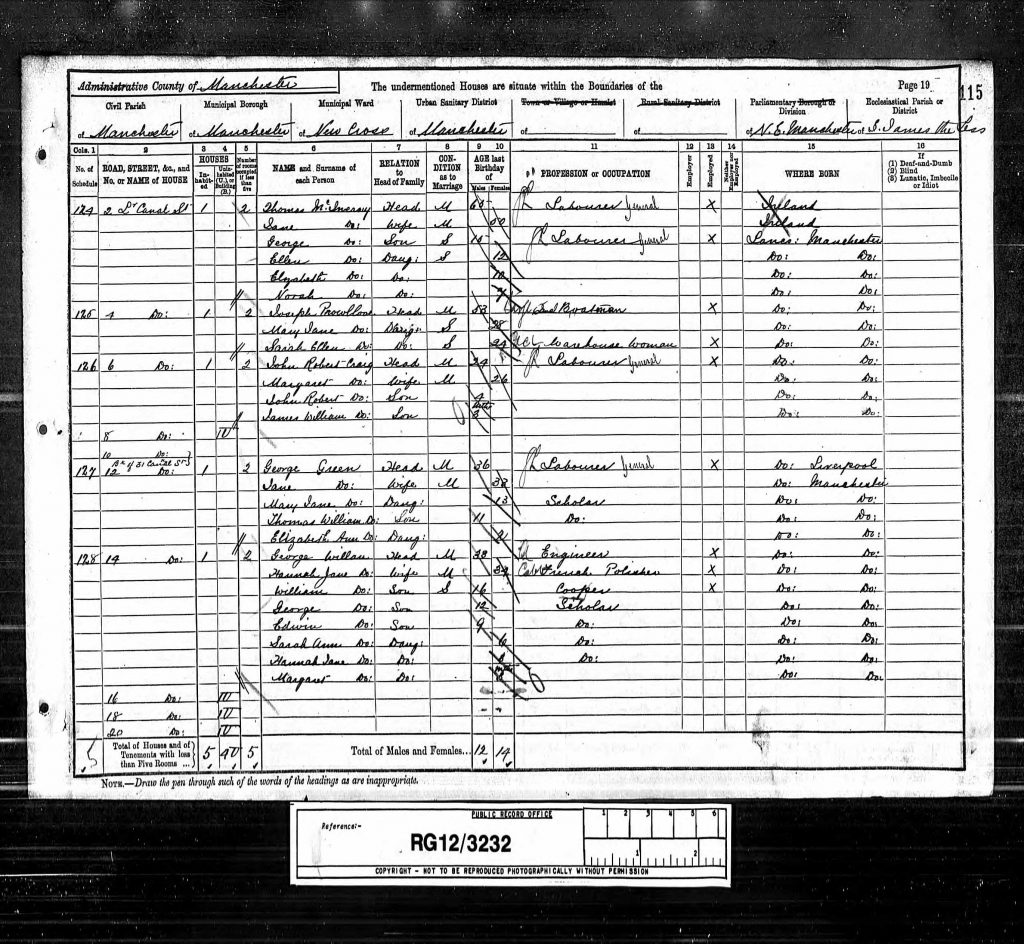
At around 5.30pm, Kennedy would be stopped by the Bradford Street gang on Alum Street with Willan asking him, “What of this scuttling?” to which Kennedy replied, “We will talk of this scuttling when I have put two or three in the infirmary!”
Strangely, Kennedy was allowed to pass through, but this seemed to incense Willan.
The following evening, Willan gathered up three of his friends – Hands, Fleming and Davidson, telling them to “Get some pop bottles and have a smack at Kennedy!”
However, it appears Kennedy had got wind of the planned attack on him. Rushing home via St. Thomas Street, he would make his way through the hostile territories that the Bradford Street gang roamed.
This would only infuriate Willan even more, declaring he would ‘dose’ (stab) Kennedy the next day.
On Saturday 23rd April and at around half past twelve, he had gathered several members of the Bradford Street gang, with all of them making their way towards the corner of Great Ancoats Street.
And just like the previous evening, Kennedy had heard that Willan and his gang would be waiting for him to past by not to long after his shift ended.
This time he wouldn’t try to dodge them, instead arranging for four of his friends to meet him at one o’clock outside the gates of the dyeworks he was employed at.
As they set off, Kennedy was joined by two of his workmates – Jimmy Cowen and John Carr. This would have normally given Kennedy the peace of mind of making his way through Ancoats safely as Cowen was a member of the infamous Bengal Tigers gangs – one of Manchester’s feared gangs at the time.
At half past one, Kennedy, Cowen and Carr were spotted in Mill Street and as they turned the corner into Great Ancoats Street they were immediately surrounded by William Willan and his gang.
“What is it to be?” asked Kennedy.
Willan, who was holding an open clasp knife replied, “Anything you like!”
His reply was like a signal for the Bradford Street gang to initiate the attack on Kennedy, Cowen and their four friends.
As the fight broke out, it quickly escalated into an all-out battle. Kennedy, realising the situation he was in began to run towards nearby Cannel Street. Making his way down the street, Willan had quickly made ground on him and in doing so plunged his knife into Kennedy’s left side from behind.
As Kennedy fell to the ground yelling out in pain, Willan turned and made his way into Alum Street and eventually out of sight.
Hearing Kennedy’s cry for help, Carr rushed over to him, asking, “What is the matter?”
In a serious amount of pain, Kennedy replied, “I’m stabbed.”
At this point, Kennedy, who was holding his hand to his side would tell Carr he wasn’t sure who had stabbed him.
Helping him onto his feet, Kennedy in a state of collapse, would make his way towards the Manchester Royal infirmary, aided by Carr, and once there and after being attended too, he would be detained until the police could arrive to interview him.
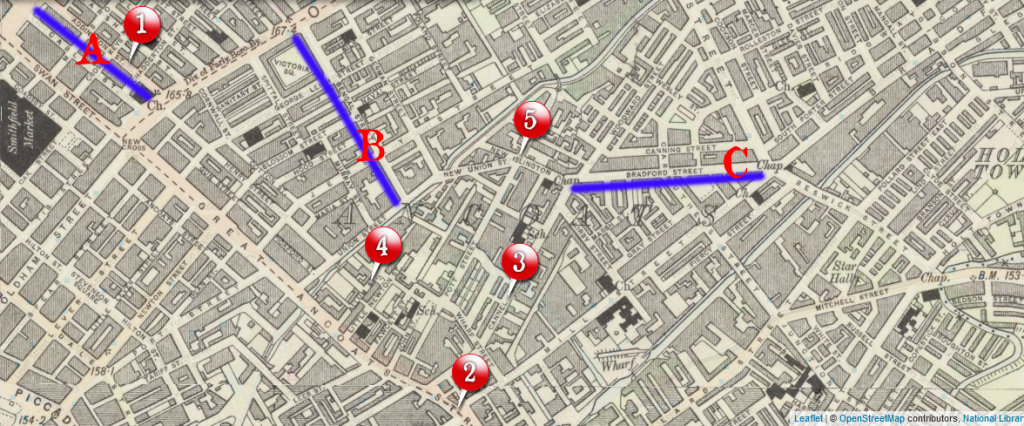
Shortly after the attack on Kennedy, Willan had made his towards New Islington and its there he would meet up with James Hands.
He was still carrying the knife which was opened. The blade containing a large quantity of blood.
“I have dosed him.” said Willan.
Not exactly surprised by Willan’s admittance, Hands asked, “Who have you dosed?”
“Kennedy!” replied Willan.
Wanting to know more, Hands then asked, “Whereabouts have you dosed him — in the head?”
Willan then began to rummage around in his pockets before pulling out an envelope containing his wages.
“No, in the ribs.” he replied whilst handing over the envelope. “Will you take my knife?”
Hands didn’t seem to hesitate, taking the knife off Willan and putting into his pocket.
“If you get copped, don’t round on me!” Willan then asked Hands.
Both boys then separated, with each making their way to their homes.
Hands would continue to look after the knife until the following Sunday and for whatever reasoning, perhaps a guilty conscience – he would take it to the Cannel Street police station before handing it over to Inspector Bates.
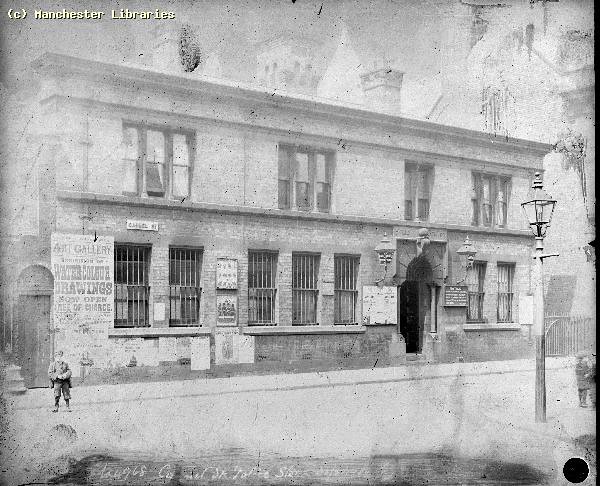
On Monday, 25th April, Peter Kennedy, who had been treated by the doctors at the Manchester Infirmary but who was now in a critical condition, would be interviewed by the police.
As for Willan, he was taken into custody by Sergeant Whitehead, and in answer to the charge of stabbing, he simply said, “I did not do it. I received a knife from Edward Fleming, which I gave to James Hand in Canal-Street!”
Fleming himself would also be arrested later that same afternoon and whilst denying the charge of stabbing, he admitted to the police that he had a stick at the time of the attack.
On Tuesday, 26th April and before Mr. E. M. Henriques and Mr. Holt, William Willan and Edward Fleming were charged with inflicting grievous bodily harm on Peter Kennedy by stabbing him with a knife.
A large number of witnesses were called whose evidence was enough to connect both Willan and Fleming with the charged aimed at them. Both boys would be remanded with all witnesses being bound over to attend at the next hearing.
Just over a week later and on Sunday, May 8th at around 8pm – Peter Kennedy would sadly pass away from his wounds due to an internal hemorrhage and two days later, on Tuesday, May 10th, the inquest into his death would take place at the City Coroner’s Court, Minshull Street, with The Deputy City Coroner, Mr. Sidney Smelt overseeing the case.
By this time, Charles Davidson had also been arrested and charged with causing the death of Kennedy.
Thomas Kennedy, father of Peter would give evidence of identification of his son.
James Hand would be the next to be questioned and he would give an extremely detailed account as to the events that took place on Saturday, 23rd April.
He would tell the court that he and his two companions would “dose him” to which the Coroner asked, “What did you mean by that?”
Hands replied, “We meant to do him harm.”
Hands would also tell the court of how he came across Willan close to New Islington who offered him his wages to take the knife.
James Cowen was the next witness to take to the stand. He, just like James Hand, would go into detail as to what had occurred on that Saturday afternoon, telling the jury that he and Kennedy had been surrounded by Willan and his gang and that after they had separated he heard Kennedy shout, “Oh!”. Upon looking at where Kennedy had shouted from, he had seen Willan falling over but holding the knife.
Charles Davidson, William Willan and Edward Fleming would all take to the stand to give their versions of the events that had taken place.
Fleming would tell of how he gone with Willan and Davidson into Great Ancoats Street for the sole purpose of seeing Kennedy to ask him to let the matter drop (meaning a fight with Willan).
As for Willan, he would reaffirm what Fleming had indeed told the court in that he had asked Kennedy to let the matter drop and let him (Fleming) get back to work.
But he would also tell of how Kennedy had told his companions to lash out before running away. It was in the course of running that he fell onto the ground, with Willan falling onto him.
At the conclusion of Willan’s statement, the court adjourned for lunch but the coroner expressed his intention of having all three boys before him upon resumption later in the afternoon.
Doctor John William Smith would take to the stand after lunch, and he gave a statement telling of how he had attended to Kennedy at the Royal Infirmary and at the close of his evidence, the case was adjourned until Thursday, 12th May.
The hearing on the 12th May; evidence, just as what was brought up at the inquest 26th April would again be given and Willan, Fleming and Davidson would be committed for trial at the assizes on the charge of wilful murder.
At the Manchester Assizes on Friday, 20th May 1892 and before Justice Collins – William Willan, Edward Fleming and Charles Davison were indicted for the murder of Peter Kennedy. All of the boys involved, including that of Kennedy were just 16 years of age as we have already mentioned at the start of this story.
The evidence, as detailed by Mr. H. W. West, Q.C., would disclose a system of what was known as “scuttling” or fights with deadly weapons between various factions in the lower districts of the City.
In court, the knife used by Willan as well as that of the stick used by Fleming were produced. The jury would also hear of how Willan, after stabbing Kennedy in the back, would later wipe the blood off the knife before handing it over to James Hands.
Hands, when cross examined by Mr. M’Keand would tell of how he had known Willan and Fleming for around eight months and had kept company with them for about two months. Although he had never been engaged in any scuttling, nor had ever been chased by any other gang members, he knew that by having a ‘smack’ at Kennedy with pop bottles, it was a form of scuttling.
He himself admitted that on the 21st April, he had picked up a pop bottle and ran with the others, chasing Kennedy but as Kennedy was too quick for them, they could not carry out their promises of attacking him.
He would also admit that it was his idea to meet again on Saturday, 23rd April with the view to meeting Kennedy again, but nothing was ever said about bringing a knife with them.
Hands would tell the jury that he did indeed throw an old used broken pop bottle at Kennedy and he realised that this could well be interpreted as being “scuttling.”
As for the knife he had handed over to Inspector Bates. It had been purchased by Willan from another boy called Knaggs. Hands would tell the jury that Willan had said that he would “dose” Kennedy. Hands believed that Willan intended to stab Kennedy, but did not say it was wrong to do so, although he thought it at the time. As for as he was concerned, it was no business of his.
Whilst in court, Hands explained that it was Edwards Flemmings father, also called Edward, who had called at his home and after finding out about the knife, he had asked Hands to give up the knife. Hands was afraid, thinking if he did so it would be him who would be accused of stabbing Kennedy.
Several other witnesses came forwards, including that of George Willan – William’s father. He would go on to say that his employer, John Whelan, gave William a good character.
At the close of the evidence, Mr. M’Keand addressed the jury on behalf of Willan and Flemming.
He would go on to say that if a person armed himself with a weapon and used it in such a manner as was likely to cause grevious bodily harm to another person, and death ensued, then it amounted to the crime of wilful murder; but if, on the other hand, a person used a weapon, however lethal it might be, and used it in a passion, but did not intend, when using it, to do grevious bodily harm, and death resulted, then it only amounted to manslaughter, and that was the verdict he asked them to give against Willan.
He would also tell the jury that Flemming should not be convicted of any wrongdoing. There was no evidence to show that Flemming, or indeed Charles Davidson knew that Willan intended to use the knife on Kennedy. And whilst there had been, no doubt, a conspiracy to “dose” Kennedy, there was never at any point any murderous intent.
The judge in summoning up, said it seemed to be clear that the hand of Willan struck the blow which caused the death of Kennedy, and the crime would be one of murder or manslaughter according to the intent with which it was done.
The jury retired to consider their verdict at 3.20pm, and returned back into court at 4.35pm.
In answer to the clerk of the court, the foreman of the jury said; “We find William Willan guilty of wilful murder, but strongly recommend him to mercy on account of his extreme youth : Fleming and Davidson we find not guilty.”
With this, the crowd watching from the gallery erupted into considerable excitement and during this, the judge donned the black cap as he passed the sentence of death in the usual form.
His lordship was repeatedly interrupted by Willan, who was terror-stricken.
“Oh, master, don’t ; oh, have mercy, I’m only 16!” he repeated over and over amid tears and crying.
“Oh, I’m dying!”
William Willan, 1892
At one point, Willan became so frantic that two policemen in the dock had to seize him and hold him by the arms until the sentence was completed.
He was then removed to the waiting cells below.
The gallery was almost immediately cleared, and amongst the many men and women who had filled the seats in huge numbers was the mother of Willan, who had been screaming and uttering wild cries of despair as sentence was being passed down.
On Monday, 23rd May, Mr. W. F. Alderson, solicitor; was instructed by the friends of Willan to prepare a petition for presentation to the Home Secretary asking him for a commutation of the death sentence.
Interestingly, Willan was entered into the official gaol records as a Roman Catholic, and before his trial, he had been visited by the Reverend Father Timony, of St. Albans, Ancoats, and it was believed that he had supported the petition and that copies of it would be available to be signed in the Ancoats and Oldham and Rochdale-road districts.
On Saturday, 29th May, four girls – Jane Carroll, Ellen Fox, Mary Ann Mack and Hannah Hobin were charged at Manchester Police Court with being engaged in a “scuttling” affray.
At around 10.30pm on Friday, Police Constable Wildburn saw the prisoners accosting and behaving in a disorderly manner in Dickenson-street. He made an effort to arrest them but they managed to escape.
However, at around 1.30am on the Saturday morning, he again saw the women on the corner of Chepstow-street and Oxford-street. Hobin, who was connected with William Willan, was drunk and had a belt in her possession.
On one of her arms were tattooed the words, “In loving remembrance of William Willan.”
She had arrived in Manchester after being an inmate at Elizabeth School over in Liverpool, until her 16th birthday.
Inspector Buckley declared that the girls were often the most violent participants in street fights and after only a few minutes deliberations, all four girls, of whom where well known to the police, were sentenced to a months imprisonment with hard labour.
Just over a week later, and on Wednesday, 1st June, Mr. Alderson received a letter in reference to the case of Willan.
“Whitehall. 31st May. 1892
“Sir, – In reply to your letter of the 30th instant, forwarding a numerously-signed memorial in reference to the case of William Willan, who was convicted of murder at the Manchester Assizes on the 20th instant, and sentenced to death, I am directed by the Secretary of State to inform you that, after consultation with the learned judge, he had felt justified in advising her Majesty to commute the capital sentence passed upon the prisoner to one of lite penal servitude. — I am, sir, your obedient servant, E. Leigh Pemberton.”
In effect, Willan would escape from the hangman’s noose, and be ordered to serve penal servitude for life, but this wouldn’t be the end of his story.
In fact, Willan would only serve eight years imprisonment and was released from Strangways prison in 1900.
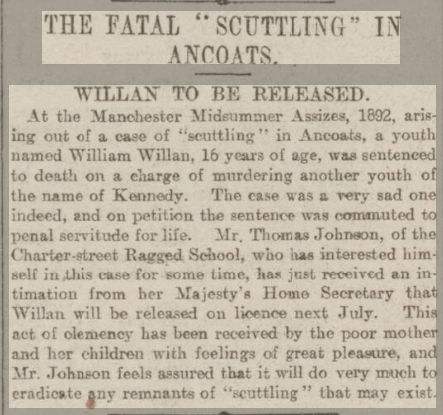
Upon his release, at the age of 24, he returned to normal life working as a cooper, living alone in nearby Harpurhey and whilst this may not seem as strange as it first appears, what makes his story even more intriguing is that whilst he was facing the possibility of execution, a letter written by the governor of Strangeways on half of Willan was sent to Inspector Jerome Caminada, one of Manchester’s finest detectives at the time, and it would prove to be a life changing experience for Willan and that of Caminada.
Whilst not directly involved with the case, Caminada was curious as to why Willan would want to speak to him.
What Caminada experienced on the day of his visit to Strangeways would leave a long lasting memory.
“The poor lad put his arms through the bars which separate us, and with tears streaming down his cheeks, implored me to save him. I was much affected, and promised I would do all in my power towards this end.”
Jerome Caminda, 1892
Willan, who not only had the help of the Reverend Father Timony who was trying his hardest to help, now had one of Victorian’s most respected Police Inspectors alongside him.
And in what we may say was a twist of fate, Willan would – five years after his release from prison, go on to marry the daughter of Caminada – Florence May, on the 22nd March 1905.
The following year, Florence would give birth to their son, George William Louis, on the 15th June.
William Willan would go on to lead a normal life, owning a Fish and Chip shop that wasn’t too far away from the spot which saw him take the life of Peter Kennedy after the brutal attack back on that fateful afternoon of Saturday, 23rd April 1892.
He lived until the age of 75, when he passed away in 1951 and was laid to rest at Philips Park Cemetery, Manchester.
And even though we look at the story of William Willan and realise that whilst he would become a changed character, who went on to lead a relatively normal life after his release from prison; we should never forget about the other young boy in this story who is also laid to rest in Philips Park Cemetery.
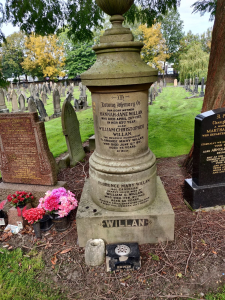
Peter Kennedy was a victim of the times. A member of a rival scuttling gang, and someone tough enough to, for the most parts – stand up for himself. And yet he was struck down in his youth at the hands of a boy of same age. He would never get the opportunity to grow old, live a happy life or have children of his own.
His grave can be found by looking for his headstone that is located within the Roman Catholic plot and is recorded as being H617.
As for the beginning of the end of the scuttlers. What truly makes this case stand out amongst the relatively few fights between the rival gangs that had resulted in murder was that it seemed gang members would not try to defend Willan for his actions. Whilst scuttling was a menace to society, there was still a bizarre code of honour that most of the gangs seemingly adhered too. Whilst they would fight each other using any available objects they could lay their hands on, from broken pop bottles to belts and stones – one thing that very rarely happened was that one of their own would be intentionally murdered by another rival gang, and whilst death did occur from the effects of the odd fight, the William Willan case it seems shocked the gangs of Manchester to the very core, resulting in them turning on one of their own for the very first time.
The days of scuttling where coming to an end.
Sources used in this story;
Manchester Evening News – Friday 20 May 1892
Dundee Courier – Saturday 21 May 1892
Manchester Evening News – Wednesday 11 May 1892
Manchester Times – Friday 27 May 1892
+ many more courtesy of the British Newspaper Archive – www.britishnewspaperarchive.co.uk and www.ancestry.co.uk
Please follow me on social media;
Twitter – https://twitter.com/dohpods
Instagram – www.instagram.com/dohpods
Youtube – https://www.youtube.com/c/DaysofHorrorPodcast
Music;
Casual Desire – Ugonna Onyekwe – No Copyright Music
Contact – The Tower of Light – No Copyright Music
Classical Piano – Myuu – No Copyright Music

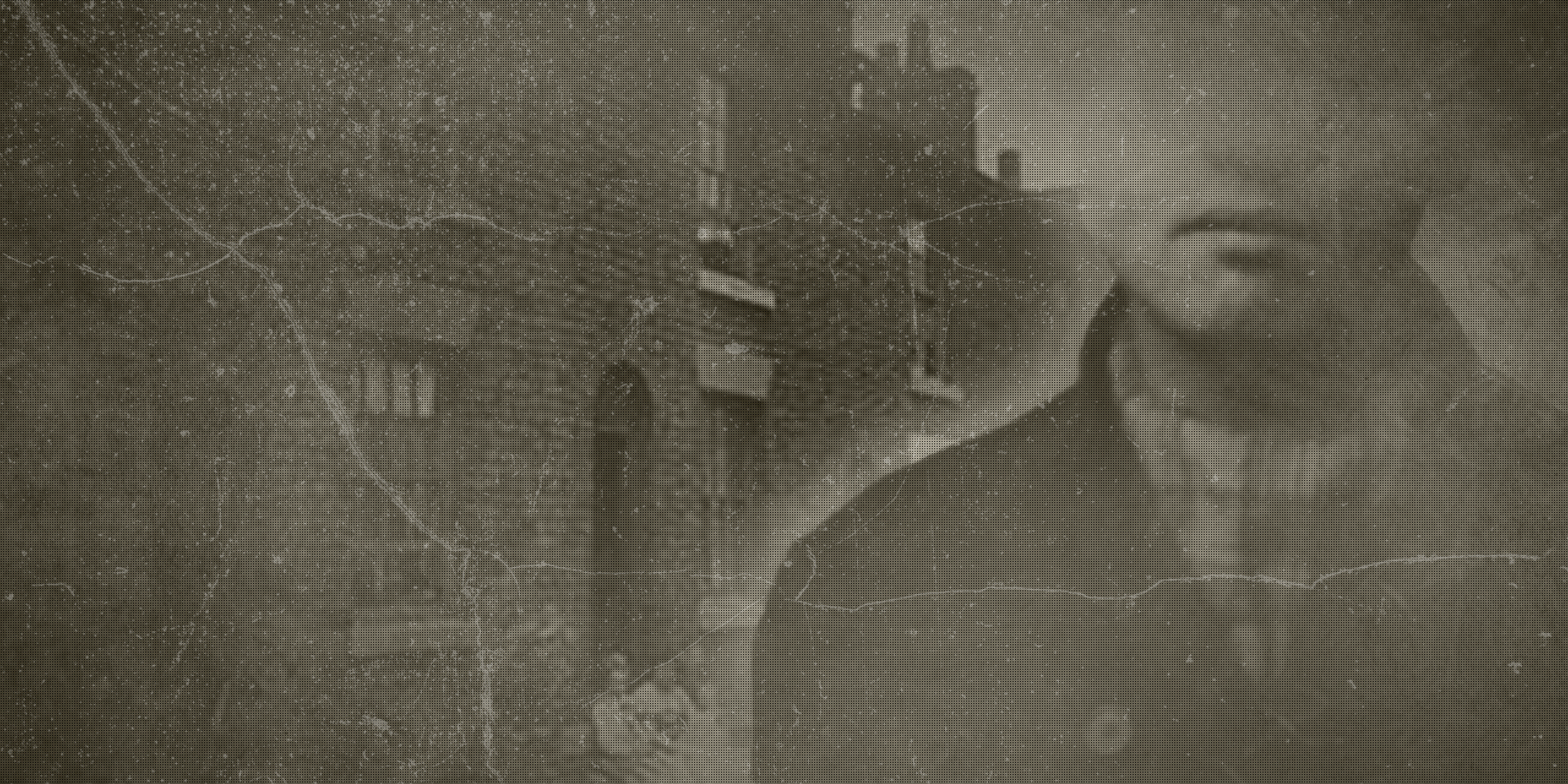
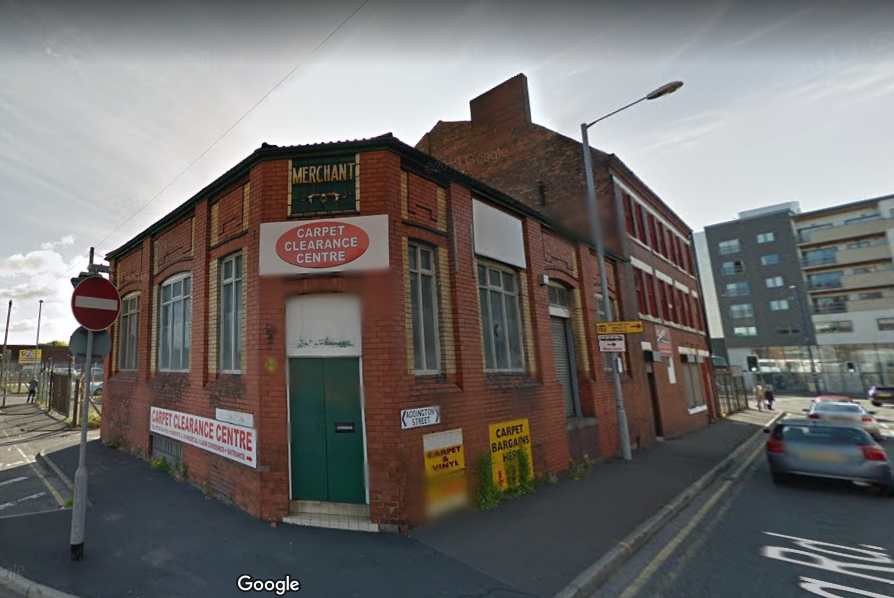
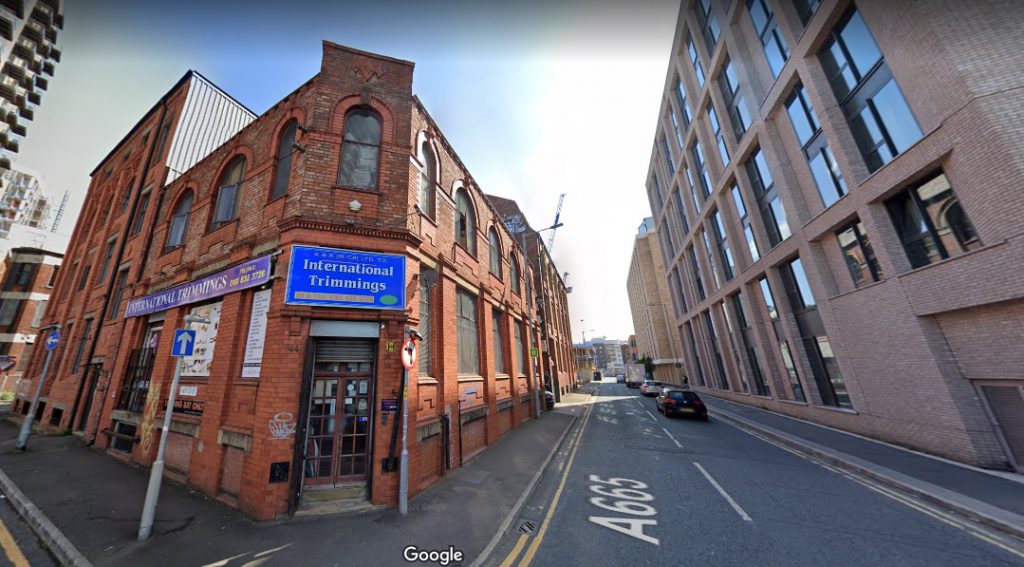
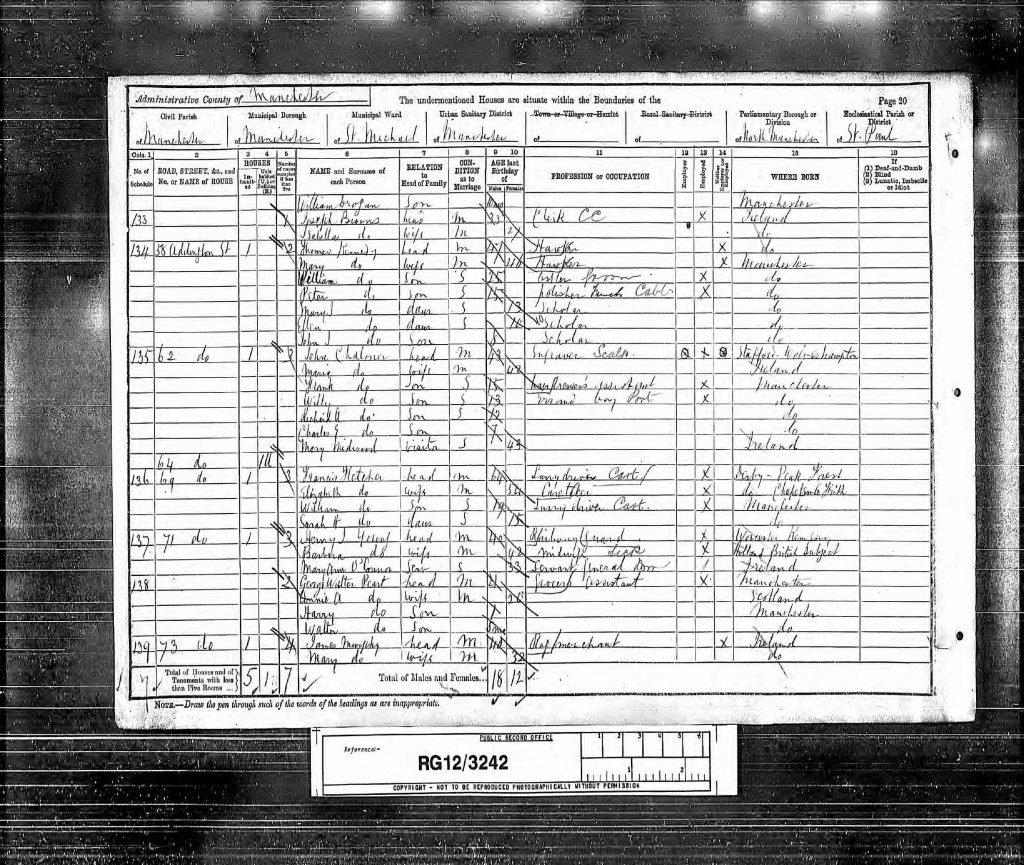
Leave a Reply to Chris Cancel reply